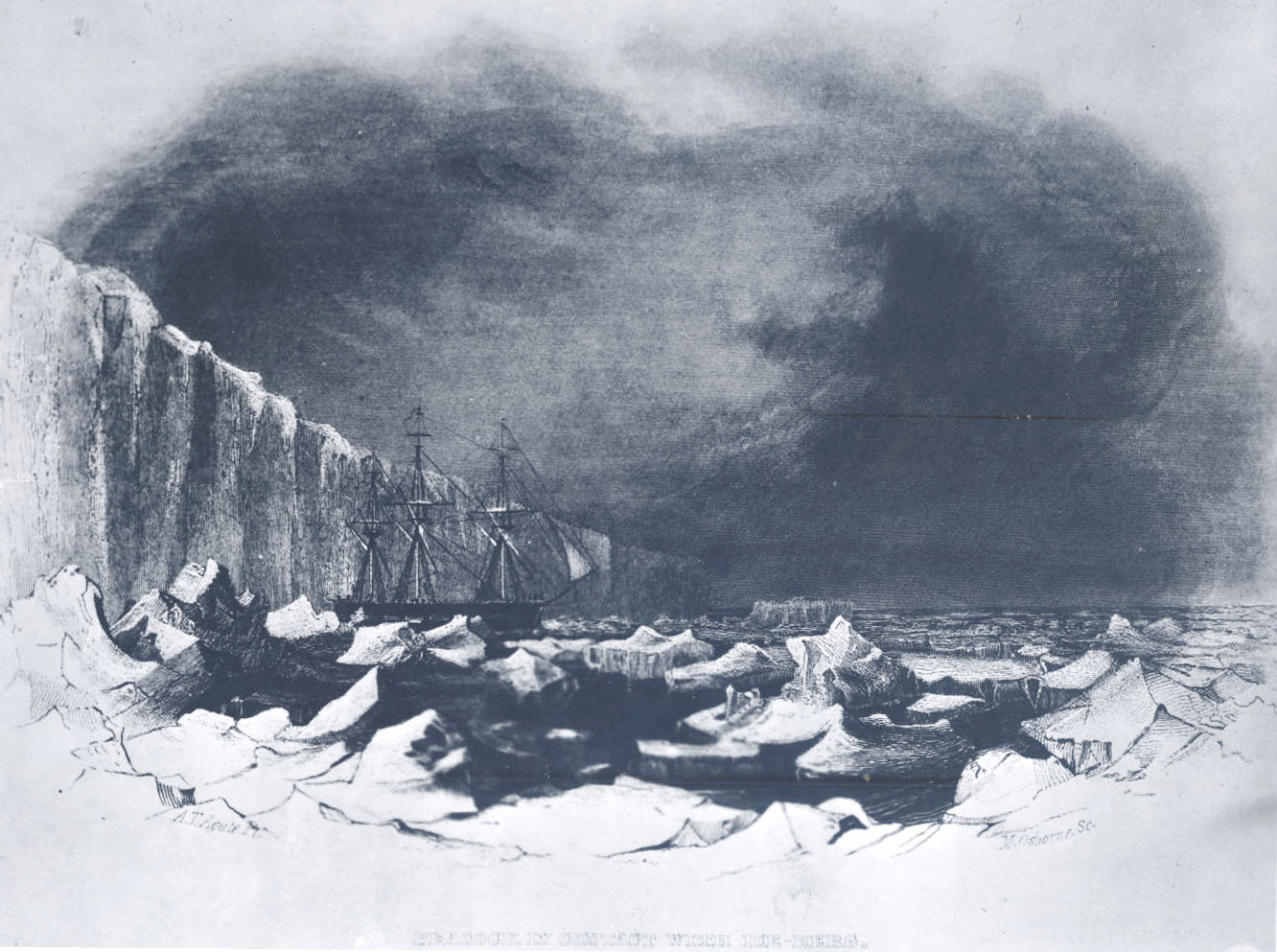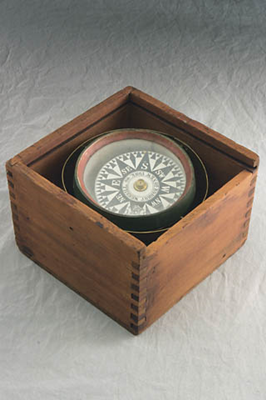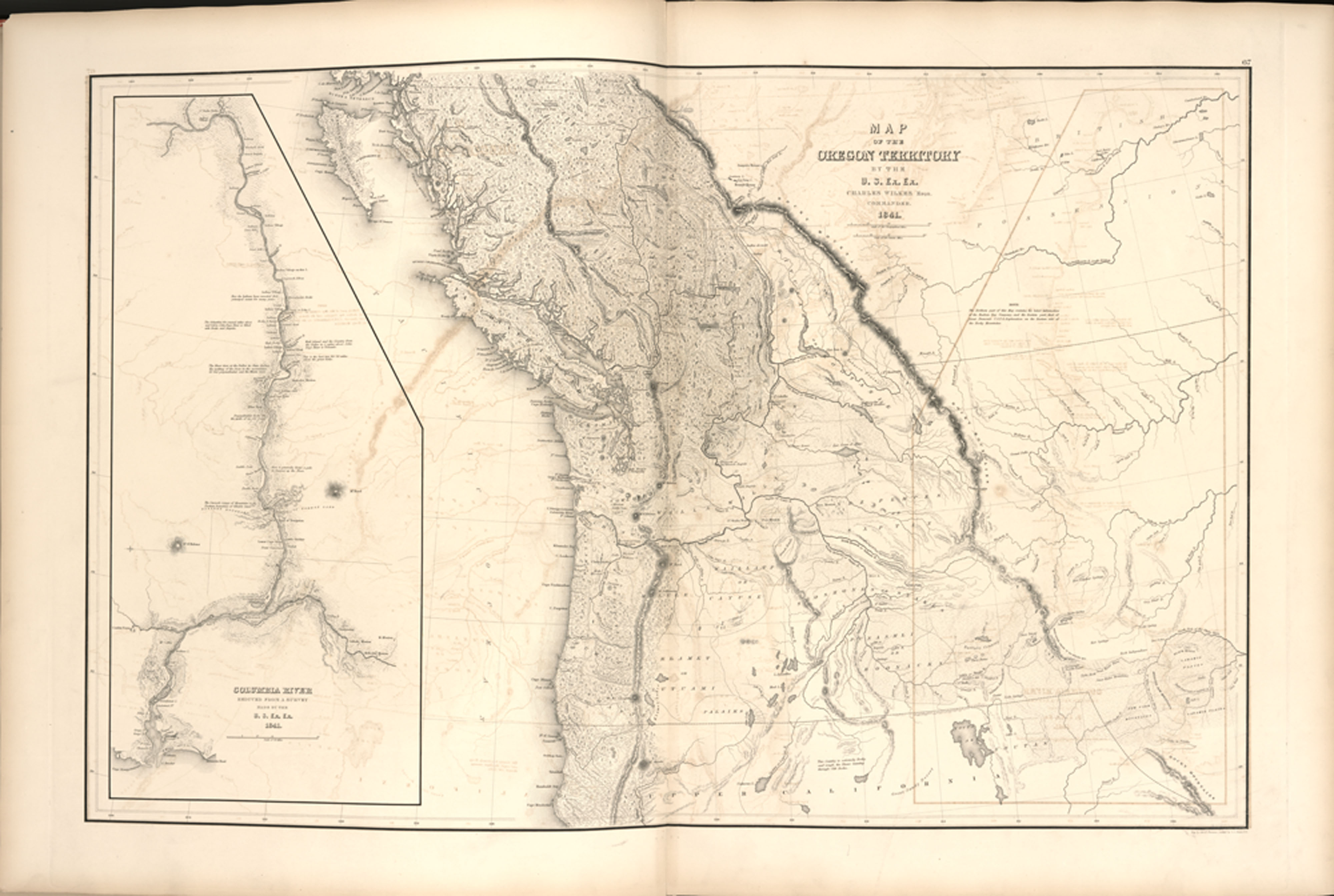The U.S.S. Peacock, a ten-gun, three-masted sloop, was the first ship outfitted by the U.S. government for scientific exploration. Part of the U.S. Exploring Expedition of 1838-1842 to explore and survey the Pacific Ocean, the Peacock sank at the mouth of the Columbia River in 1841.
Built in 1813 in the New York Navy Yard, the Peacock was used to disrupt enemy trade, protect American merchantmen, and provide transportation for political officials. During the War of 1812, the warship and its crew won a notable victory against the British brig HMS Epervier. The Peacock was the ship used on a series of diplomatic missions to deliver ratified trade treaties to Arabia, Muscat, and the Kingdom of Siam (modern-day Thailand).
The Peacock was rebuilt in 1828 to make it suitable for exploration. The new ship was largely the same as the original, but with an armament of ten guns rather than twenty-two. The Peacock carried a crew of 130 men, displaced 680 tons, and measured 118 feet in length and 31.6 feet at her beam.
In 1836, after years of deliberation, Congress authorized the U.S. Exploring Expedition to expand scientific knowledge of the land and peoples of the Pacific Ocean. Nine scientists and artists joined the crews of the Peacock and five other ships of the expedition squadron, commanded by Lt. Charles Wilkes. The expedition embarked from Norfolk, Virginia, in August 1838 and sailed around Cape Horn and into the Pacific. For two years, the squadron surveyed the islands of the South Pacific and much of the coastline of Antarctica.
At midday on July 17, 1841, the Peacock attempted to enter the mouth of the Columbia River, where it ran aground on a sandbar. For twenty-four hours, the crew worked to right the ship. Watching the struggle from a nearby schooner, the Flying Fish, Midshipman William Reynolds wrote: “We were haunted by horrible fancies of drowning men & by the harrowing question of who, who shall we see on the morrow?” Finally, the Peacock’s captain, Lt. William Hudson, gave the order to salvage as many of the scientific materials and supplies as possible and to abandon the ship. Despite the danger of the situation, the crew suffered no casualties and only one injury.
Hudson and his crew evacuated to Fort George (present-day Astoria) until Lieutenant Wilkes arrived and purchased the brig Thomas Perkins as a replacement for the Peacock. The crew relocated to the new brig, renamed the Oregon, and continued on the expedition’s mission to gather natural, geographic, and cultural information about the Oregon Country.
-
!["Peacock contact with iceberg with Wilkes Expedition." Drawing by M. Osbourne.]()
U.S.S. Peacock.
"Peacock contact with iceberg with Wilkes Expedition." Drawing by M. Osbourne. Courtesy Oreg. Hist. Soc. Research Library, OrHi91013
-
![]()
Compass used on the U.S.S. Peacock, c.1835-1838.
Oregon Historical Society Museum Collection, 3027
Related Entries
-
![Columbia River]()
Columbia River
The River For more than ten millennia, the Columbia River has been the…
-
![Fort George (Fort Astoria)]()
Fort George (Fort Astoria)
Fort George was the British name for Fort Astoria, the fur post establi…
-
![Shipwrecks in Oregon]()
Shipwrecks in Oregon
Approximately three thousand ships have met their fate in Oregon waters…
-
![United States Exploring Expedition (1838-1842)]()
United States Exploring Expedition (1838-1842)
The United States Exploring Expedition (1838-1842), also known as the W…
Related Historical Records
Map This on the Oregon History WayFinder
The Oregon History Wayfinder is an interactive map that identifies significant places, people, and events in Oregon history.
Further Reading
Bordwell, Constance. “Delay and Wreck of the Peacock: An Episode in the Wilkes Expedition.” Oregon Historical Quarterly (Summer 1991). 119-198.
Philbrick, Nathaniel. Sea of Glory: America’s Voyage of Discovery: the U.S. Exploring Expedition, 1838-1842. New York: Viking, 2003.
Reynolds, William. The Private Journal of William Reynolds: United States Exploring Expedition, 1838-1842. Edited by Nathaniel Philbrick and Thomas Philbrick. New York: Penguin, 2004.
Tyler, David B. The Wilkes Expedition: The First United States Exploration Expedition (1838-1842). Independence Square, Philadelphia: The American Philosophical Society, 1968.
Stanton, William. The Great United States Exploring Expedition of 1838-1842. Berkley: University of California Press, 1975.
Wilkes, Charles. Narrative of the United States Exploring Expedition during the Years 1838, 1839, 1840, 1841, 1842. Volumes I-V. Philadelphia: Lea and Blanchard, 1845.






